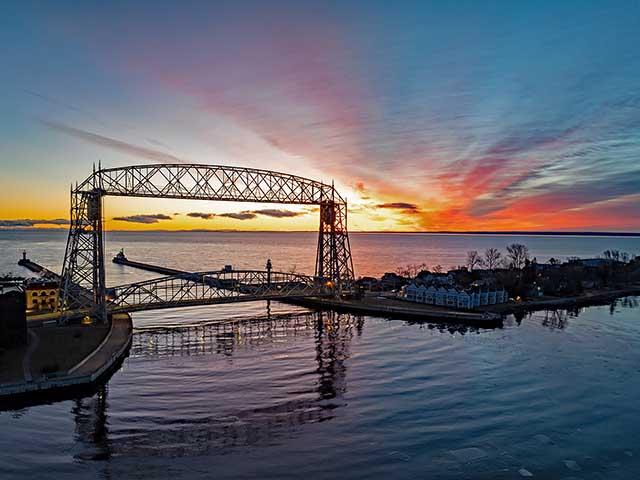Cash Market Moves
Record Warm Winter Causes Record Low Ice Coverage on the Great Lakes
National Oceanic and Atmospheric Administration (NOAA) researchers at NOAA's Great Lakes Environmental Research Laboratory (GLERL) report that they've seen a steady decrease in ice coverage across the Great Lakes, which has reached a historic low.
"We've crossed a threshold in which we are at a historic low for ice cover for the Great Lakes as a whole," says GLERL's Bryan Mroczka, a physical scientist. "We have never seen ice levels this low in mid-February on the lakes since our records began in 1973."
The current winter season (2023-24) began with very warm air temperatures, resulting in slow ice formation, according to NOAA Research. "January 2024 did see some periods of cold but they were not sustained long enough to allow ice coverage to increase with our current year peak reaching between 15-20% coverage during the third week of January. Maximum ice cover for the year usually peaks in late February or early March and, on average, the Great Lakes experience a basin-wide maximum in annual ice coverage of about 53%."
As of Feb. 24, 2024, the combined average of the Great Lakes' ice coverage is at 8%, with Lake Michigan 10% covered, Lake Huron 17%, Lake Erie 0.2%, Lake Ontario 1% and Lake Superior 4% covered. https://www.weather.gov/…
P[L1] D[0x0] M[300x250] OOP[F] ADUNIT[] T[]
Communities around the lakes have strong economic ties to ice levels and the changes in ice cover can have big impacts on the people living there. Many local businesses rely on ice fishing and outdoor sports which can only happen if the ice is thick and solid. Some fish species also use the ice for protection from predators during spawning season and there's increasing evidence that the ice plays a role in regulating many biological processes in the water, according to NOAA research.
"The absence of ice can also make the shoreline more susceptible to erosion and increase the potential for damage to coastal infrastructure during the winter months due to high winds and waves. Thick ice often acts to dampen the large wave action and protect the shoreline. Lack of ice cover can also increase lake effect snow," said NOAA research.
"For three months out of the year, there's pretty much no sediment being deposited in our navigation channels on Lake Michigan. But with less ice, that's more months of the year when sand moves around," U.S. Army Corps of Engineers coastal engineer Jim Selegean said in an article on the Great Lakes Commission website.
Selegean added that because of the way sand moves, marinas and harbors may be looking at more frequent dredging in the future.
Given the lack of ice on the Great Lakes, you would think the shipping season would be opening soon but that won't happen. According to the St. Lawrence Seaway Management Corporation, the opening of the 2024 navigation season is scheduled to take place on the following dates and times:
- Montreal / Lake Ontario Section: 8 a.m. DST March 22, 2024
- Welland Canal: 8 a.m. DST March 22, 2024
The opening of the Sault Ste. Marie Locks (U.S.A.) is currently scheduled for March 25, 2024. As per federal orders, the Soo Locks close on Jan. 15 and reopen on March 25 every year. During this time, maintenance is performed on the chambers. Although there are occasional exceptions, such as ice, these two dates are pillars for shipping season in the Great Lakes. As soon as the clock strikes midnight on March 25, freighters, tugboats, luxury crafts and more can resume lockage between Lake Superior and Lake Huron.
Link to NOAA GLERL ice cover reports: https://www.glerl.noaa.gov/…
Link to U.S. National Ice Center: https://usicecenter.gov/…
Mary Kennedy can be reached at mary.kennedy@dtn.com.
Follow her on X, formerly known as Twitter, @MaryCKenn.
(c) Copyright 2024 DTN, LLC. All rights reserved.




